An analysis of images taken by the Spirit rover of olivine-rich rocks in Gusev crater has revealed a much more violent volcanic origin than originally thought and one that likely occurred early in Mars’s history. Plus, balloon science, more Mars, more volcanoes, pretty Hubble images, and What’s Up (a supernova!).
Podcast
Show Notes
Riding in NASA’s beautiful balloons
- NASA press release
Solar power better than reactors for Mars
- UC Berkeley press release
- “Photovoltaics-Driven Power Production Can Support Human Exploration on Mars,” Anthony J. Abel et al., 2022 April 27, Frontiers in Astronomy and Space Sciences
Ingenuity spies Percy’s landing gear
- NASA JPL press release
Flowing carbon dioxide glaciers on Mars
- PSI press release
- “Carbon Dioxide Ice Glaciers at the South Pole of Mars,” I. B. Smith et al., 2022 April 26, JGR Planets
Martian volcanoes once chose violence
- ASU press release
- “Olivine and carbonate-rich bedrock in Gusev crater and the Nili Fossae region of Mars may be altered ignimbrite deposits,” Steven W. Ruff et al., 2022 March 18, Icarus
Studying our planet thru humanity’s oldest stories
- Studying Volcanoes through Myths, Legends, & Other Unconventional Data (Eos)
- “The 1717 eruption of Volcán de Fuego, Guatemala: Cascading hazards and societal response,” A. A. Hutchison, K. V. Cashman, C. A. Williams, and A. C. Rust, 2016 February 11, Quaternary International
- “The 1902 Plinian eruption of Santa María volcano, Guatemala: A new assessment of magnitude and impact using historical sources,” Hannah C. Berry, Katharine V. Cashman, and Caroline A. Williams, 2021 May 2, Journal of Volcanology and Geothermal Research
- “Observations of a stratospheric aerosol veil from a tropical volcanic eruption in December 1808: is this the Unknown ∼1809 eruption?“, A. Guevara-Murua et al., 2014 September 16, Climate of the Past
Merger gives galaxies wings
- NASA image release
Hubble celebrates anniversary with galaxy quintet
- ESA Hubble press release
- Hubblesite press release
What’s Up: SN2022hrs and International Dark Sky Week
- Supernovae 2022hrs in NGC 4647 (Rochester Astronomy)
- International Dark Sky Week 2022 (IDSA)
Transcript
Hey, Pamela, did you see that Ingenuity did yet another flight?
I did! And this time, it returned some really amazing images of something that brought it to the surface.
Speaking of Mars, we have quite a few stories about the red planet today, including one on ancient volcanoes.
And I’m going to talk about using oral histories and mythology to understand volcanoes here on Earth.
Plus, we’ll have a couple of cool Hubble images, and I’ll go over What’s Up this week.
All of this and more, right here on the Daily Space.
I am your host Dr. Pamela Gay.
And I am your host Erik Madaus.
And we’re here to put science in your brain.
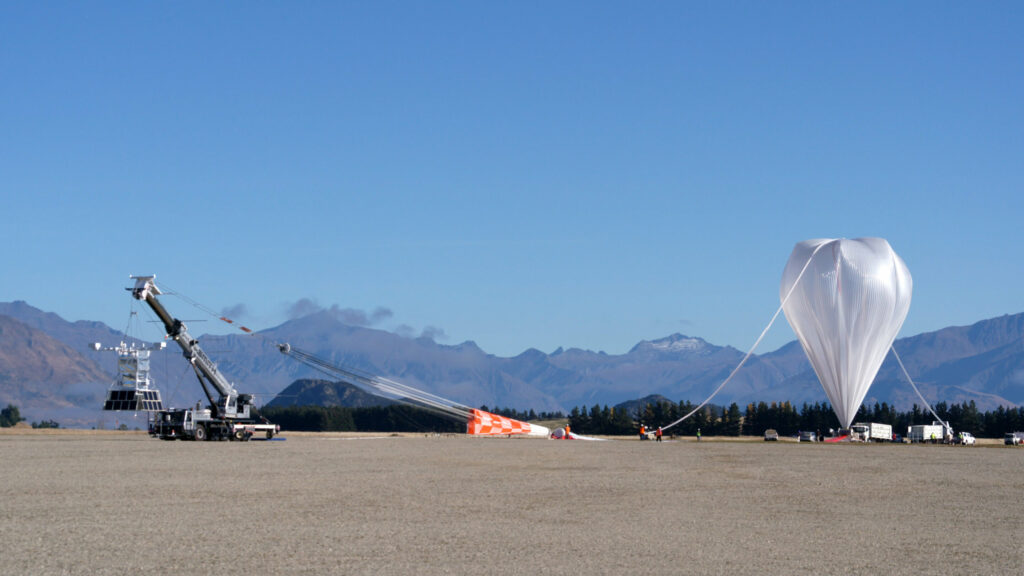
A couple of weeks ago we talked about a NASA project to improve the science return from atmospheric balloons by, well, returning them… or at least their payloads. This story isn’t an update on that project but on another technology for scientific balloons.
The super pressure balloon (SPB) development started in 2017 in New Zealand. Future testing was delayed because of the ongoing panini, but NASA teams are returning to start the test campaign. The super pressure balloon promises to allow up to 100-day flights, which can replace sending an experiment to orbit. The key problem of balloon design for these long flights is the expansion and contraction of materials during day and night, which causes the balloon to break eventually.
The super pressure balloon has different fittings that allow the balloon to move without breaking, making it more durable. Another upgraded mechanism is the launch collar, which, according to the NASA press release: …is the mechanism that holds the balloon film together after release of the balloon bubble from the spool—the collar is released just before launch of the payload”.
After this year’s flight, NASA will do two more next year, also from New Zealand.
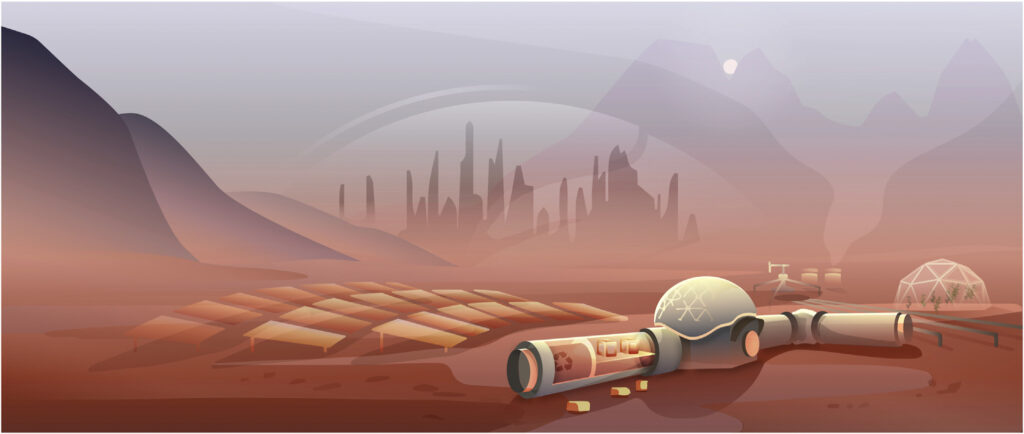
As the different human efforts slowly advance towards eventually putting boots on Mars, some scientists are determining the best way to provide power for a base there. Two options are solar panels or a small nuclear reactor, and researchers from the University of California at Berkeley think solar panels are the way to go.
The advantage of nuclear power for a Martian base is they will work 24/7 but are heavy. Solar panels, on the other hand, are lighter but only work during the day when it isn’t too dusty. Mars has frequent dust storms – like what killed the Opportunity rover in 2019 – so solar isn’t the best option at face value.
According to the study, published in Frontiers in Astronomy and Space Science, solar panels are better than nuclear power for over half of the Martian surface, if – and it’s a big if – some of the power is used to produce fuel for fuel cells to cover nights and storms. Reactors are better if the base is closer to the poles which get less sunlight.
The key that the solar panels hinge on over nuclear power is their lower weight and efficiency. Nuclear reactors are heavy, and lifting heavy things off of the planet costs a lot of money and takes up more space. Instead, you could bring a lot of solar panels for the same mass budget and much less cost. Having more panels also means spares when one breaks. You can have fewer more powerful reactors but are down a more significant amount of power if one breaks.
However, the weight savings over solar panels was slight, only about 1.2 metric tons. To further this advantage, the researchers propose using flexible solar panels that can be rolled up for storage and unfolded on Mars.
So now we just have to get boots on the ground, right?
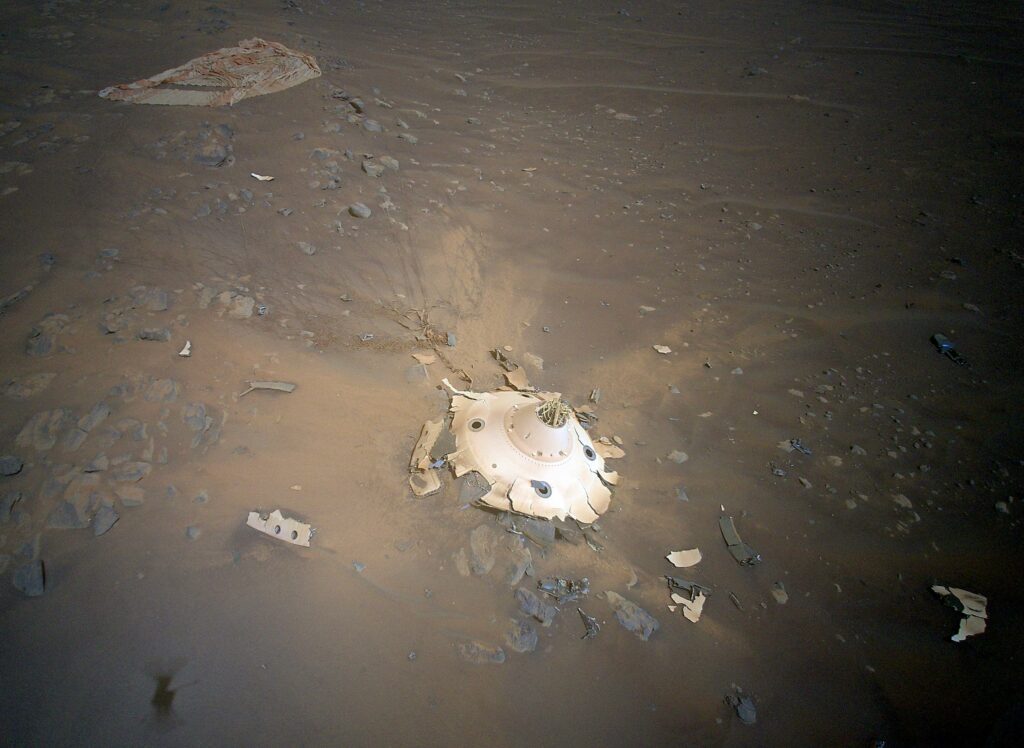
While we may not have boots on the ground on Mars, we definitely have wheels. And a helicopter. Ingenuity recently completed its 26th flight above the surface of the red planet, and this time, NASA engineers had a request: Could Ingenuity please take pictures of Perseverance’s backshell and parachute that had been found by the helicopter back in February.
And Ingenuity got ten color images of Percy’s stuff. If you are watching us on NowMedia, you can see one of the images on screen, which has the backshell’s debris field and the parachute. We will have links to the other images in our show notes at DailySpace.org. Plus if you follow us on Twitter, we shared NASA’s tweet about the images on Wednesday.
Now, these pictures weren’t taken as a lark. They have the potential to make future landings on Mars even safer, and that’s what the engineers want to analyze them for. Landing on Mars is no easy feat. That’s why we keep calling the landings “The 7 Minutes of Terror” and such. You have to slow your craft down from nearly 20,000 kilometers per hour, endure high temperatures, and you know, not crash into lots of pieces.
Space is hard.
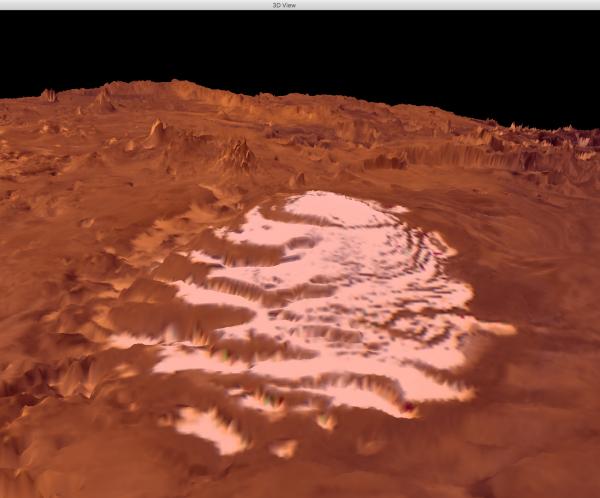
One of the places that we would love to explore but are not currently allowed because of potential biological contamination is the glaciers on Mars. First, some of them are made of carbon dioxide, which is interesting on its own. But now, thanks to research from our own Planetary Science Institute, we have found out that those glaciers are actually flowing, even today.
The new paper, published in Journal for Geophysical Research – Planets and led by Isaac Smith, is the result of glacial modeling from existing data. The models showed that carbon dioxide ice flows almost 100 times faster than water ice under Martian conditions when there are decent slopes involved. Since we haven’t seen the water ice glaciers flowing, that result makes sense. In fact, Smith explains: If the ice had never flowed, then it would mostly be where it was originally deposited, and the thickest ice would only be about 45 meters thick. Instead, because it flowed downhill into basins and spiral troughs – curvilinear basins – where it ponded, it was able to form deposits reaching one kilometer thick.
The ice itself began forming about 600,000 years ago at the south pole. The volume and mass have increased because of climate cycles during that time, although there were a few periods where mass was lost due to sublimation. Even more wildly, Smith notes: The glaciers have enough mass that if sublimated, they would double the atmospheric pressure of the planet. The longest glacier is about 200 kilometers long and about 40 kilometers across.
That is a lot of carbon dioxide ice. Fortunately, Smith has also identified some possible analogs here on Earth that he was able to match to the Martian features, which helped when comparing them to the models.
Maybe someday we can get a core sample? We can only hope.
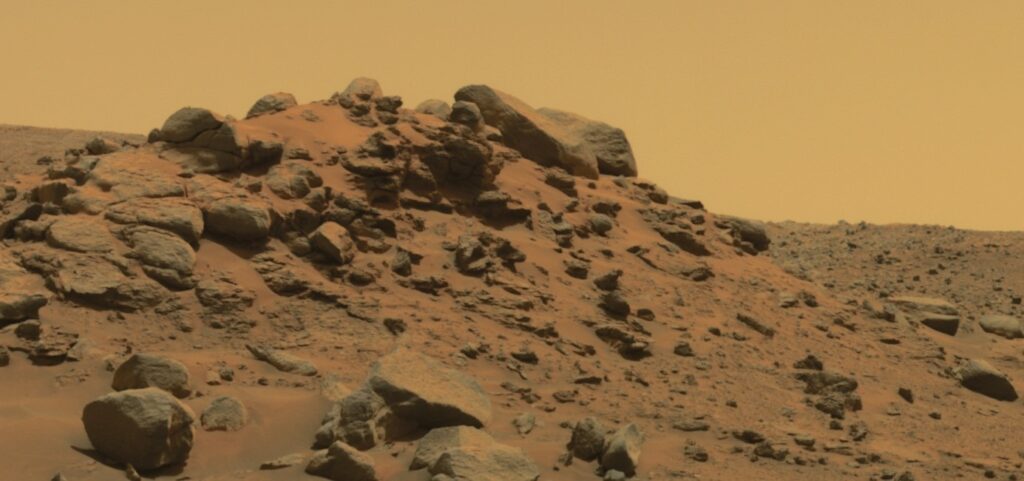
On the opposite end of the spectrum from ice, we turn to fire on Mars. Well, more accurately, we turn to volcanos on Mars. And specifically, we’re going to talk about a point in time when some of those volcanoes may have chosen violence.
First, some background information. Almost twenty years ago, there were two little rovers that landed on Mars – Spirit and Opportunity. They were both planned out as ninety-day missions, but as I’m sure a lot of you recall, they lasted far longer than that. And about sixteen years ago, Spirit explored Gusev crater and found bedrock that was rich in olivine. Cool, olivine. If you’re like me, you probably are asking, “What’s olivine?” I’ve actually asked that question.
Olivine is a green mineral that comes from magma in the mantle, both on Mars and here on Earth. It’s not really unexpected, but it is definitely a clear signal of some kind of volcanic activity occurring that brought those rocks to the surface.
Fast forward to the past year on Mars and a newer, much bigger rover named Perseverance. You know, the rover the helicopter is running around with. Anyway, there are also olivine-rich rocks over in the Nili Fossae region where Jezero crater is being explored by Percy. And both of these locations, despite not being close to one another, have the highest abundance of this mineral so far found on Mars. Which, of course, intrigued scientists as to how craters ended up with similar rocks.
Enter a team of scientists trying to link the two locations by their volcanic history. Their work, led by Steve Ruff and published in the journal Icarus, involved testing the leading hypothesis that the olivine was deposited as part of gently falling ash. They analyzed images from Spirit’s Microscopic Imager and discovered rocks with an interesting texture. By comparing those images to a catalog of Earth rocks, they found similarities, but those similarities mean the eruptions were far more violent than expected.

What Ruff and the team noticed were flame-like structures that held flattened pumice fragments in their cracks. And that matches up with a type of igneous slash sedimentary rock found here on Earth called ignimbrite. In fact, Ruff notes: That was a eureka moment. I was seeing the same kind of textures in the rocks of Gusev crater as those in a very specific kind of volcanic rock found here on Earth.
And that ‘specific kind of volcanic rock’ has a very specific formation history. It forms as the “result of flows of pyroclastic ash, pumice, and blocks from the largest volcanic explosions known on Earth.” Or, as Ruff goes on to explain: Imagine a ground-hugging cloud of hot gases and nearly molten ash and pumice flowing through the landscape for dozens of miles and piling up in layers up to hundreds of feet thick in just a few days.
One place on Earth where we can find ignimbrites? Yellowstone. That’s a pretty scary and explosive supervolcano, and apparently, it had cousins on Mars. We’re definitely not talking about ‘gently falling ash’ anymore.
And that olivine-rich composition is particularly telling. As Ruff says: The olivine-rich composition is unusual for most ignimbrites on Earth, but there is evidence for this composition in the oldest ones. Now with the strong evidence for ancient olivine-rich ignimbrites on Mars, maybe this points to a style of volcanism, cataclysmic explosive eruptions of olivine-rich magma, that happens in the early geologic evolution of a planet.
So billions of years ago, Mars woke up and chose violence. And now we just need to get those rock samples back from Perseverance and find out just what they are made of and how they formed.
The science being done with regard to Mars is amazing, especially as we are doing it without the involvement of people on the ground. But what about when you have people on the ground? Is it just scientists involved? No, it is not. Next, I’m going to look some more at how researchers are using oral histories and ancient texts to understand the geologic history of our own planet.
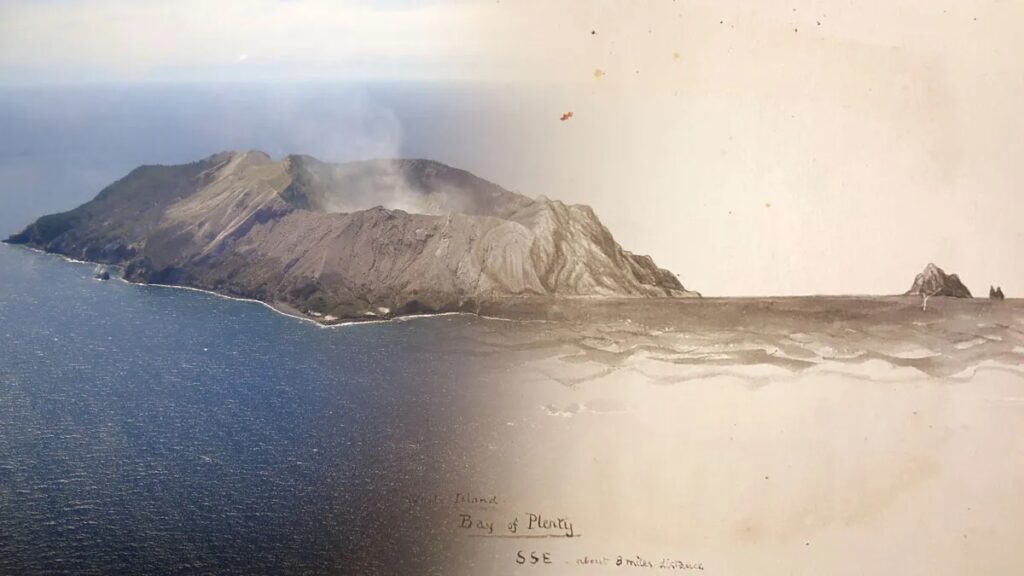
In an earlier show, we talked about how the oral histories of First Nations peoples have played a role in understanding the 1700 megaquake on the Cascadia fault line. Throughout the world, the most ancient stories – and even some of the more modern stories, if 1700 counts as modern – can be used to help us understand the history of our world. In Australia, there are asteroid impact stories associated with their largest crater. Flood myths permeate cultures on most continents and can be linked to various natural disasters. Even volcanoes have their stories told in ways geologists find useful.
A new review article in Eos by Nancy Averett highlights just how much scientists have come to rely on these traditional stories.
If you have ever been to a Hawaiian cultural event, you may even have heard some of these stories. To quote from Averett’s article: In Native Hawaiian Pelehonuamea chants, several verses describe a fight between Pele, goddess of fire and volcanoes, and her youngest sister, Hi‘iaka: In a jealous rage, Pele burns the forest that Hi‘iaka loved, then kills her lover and throws him into the Kīlauea volcano. Jumping in, Hi‘iaka starts digging to find him—but carefully; if she digs too deep, water will bubble up and put out the fire of Pele.
This story matches with fifteenth-century eruptions, during which Kīlauea’s east rift zone buried a tropical rainforest, and the mixing of groundwater and magma caused a catastrophic steam explosion that formed the volcano’s modern caldera.
This kind of mixing of ancient stories and geologic data to uncover the past has long been used in Europe, where the volcanism in Greece and Italy has long shaped myths. Tales of the oracle of Delphi point to volcanic gases rising up through that hillside until a large earthquake apparently replumbed the gases’ routes through the rocks, and ends the oracle’s abilities to reach an altered state.
The application of oral and artistic traditions outside Eurasia, however, is relatively new. In a trio of papers, a collaboration between Katherine Cashman and Caroline Williams looked at how artwork from the 1773 Tungurahua volcano eruption to find evidence of how this Ecuadorian volcano reshaped the land and changed the flow of rivers. They also studied the stories of how the 1717 Fuego volcano’s eruption affected the Spanish settlements in Guatemala and was recorded in drawings of magma flows, the colonial government’s documentation of building damage, and eyewitness accounts.
While this wasn’t exactly science by insurance claim report, it was very much science made possible through the documentation of leaders who needed emergency aid from their rulers.
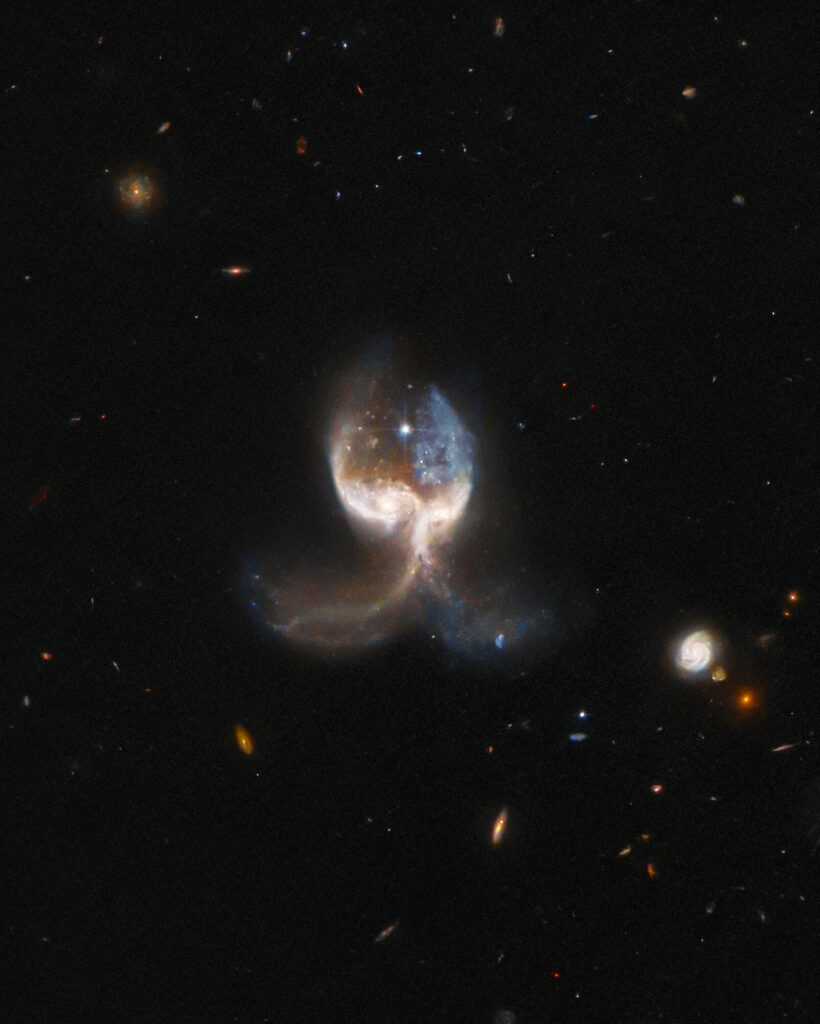
In New Zealand and amongst the Polynesian islands, in particular, the stories of the indigenous people trace the rise and fall of the land as tectonic forces shift and volcanoes build up new land. True fact – the land the Wellington airport now sits on is less than 300 years old. During a massive quake, that land and the land the nearby coastal highway sits on were raised up from the sea.
According to Maori tradition, as recorded by Elsdon Best in the 1900s, eighteen generations earlier, a great quake lifted up this land, creating a bridge from the mainland to what had previously been an island, and is now the present-day Miramar Peninsula. These stories are consistent with sedimentation and other geological data in the region.
I could keep going. I would, in fact, love to fall down this rabbit hole and spend an entire season researching and reporting on how the stories too often set aside as just wild myths actually record the history of our world, from volcanoes and earthquakes to asteroid impacts and supernovae sightings. This is fascinating stuff. Since I can’t actually spend a season on this topic, we will instead provide links on our website, DailySpace.org, so you can fall down this rabbit hole with me.
And now for something entirely different. The Hubble Space Telescope caught this stunning image of two galaxies in the process of merging. Collectively, these two galaxies are cataloged as VV-689. They started out as two normal spiral systems, but their interactions have stretched them into this beautiful symmetry. Over time, they will swing back and forth through each other, until eventually, they settle into being a single system that will in all likelihood be a fairly boring elliptical galaxy.
Beauty is fleeting, even among the stars.
The Hubble Space Telescope is still trucking on in orbit 32 years after launch, made necessary because the should-be-renamed L2 machine which still hasn’t returned science data was delayed for so long. In total, Hubble has taken data on 50,000 targets across 1.5 million observations.

Even as it ages, Hubble continues to produce amazing science, and the team released another pretty picture to commemorate this anniversary. It’s not just a pretty picture, however; there is a cool story to go along with it.
The five galaxies in the new image are called The Hickson Compact Group 40. It is a gravitationally interacting cluster of three spiral, one elliptical, and one lens-shaped galaxy. Scientists know they are gravitationally interacting because observations in the X-ray show hot gas in between them. Infrared observations tell how many stars are forming. And radio light observations show us there are strong sources in the center of each galaxy that could be supermassive black holes.
Lots of galaxy clusters exist, but this one is special. These galaxies are off by themselves in the constellation Hydra, and the cluster is one of the densest known. According to the press release, in a billion years all of the galaxies will merge into one big elliptical galaxy. This kind of tight cluster was common in the early universe, and by studying them we can figure out when, how, and from what galaxies formed.
We’ll have a link to the full image in our show notes at DailySpace.org.
Speaking of cool things in the sky, it’s time for our weekly what’s up segment.
What’s Up
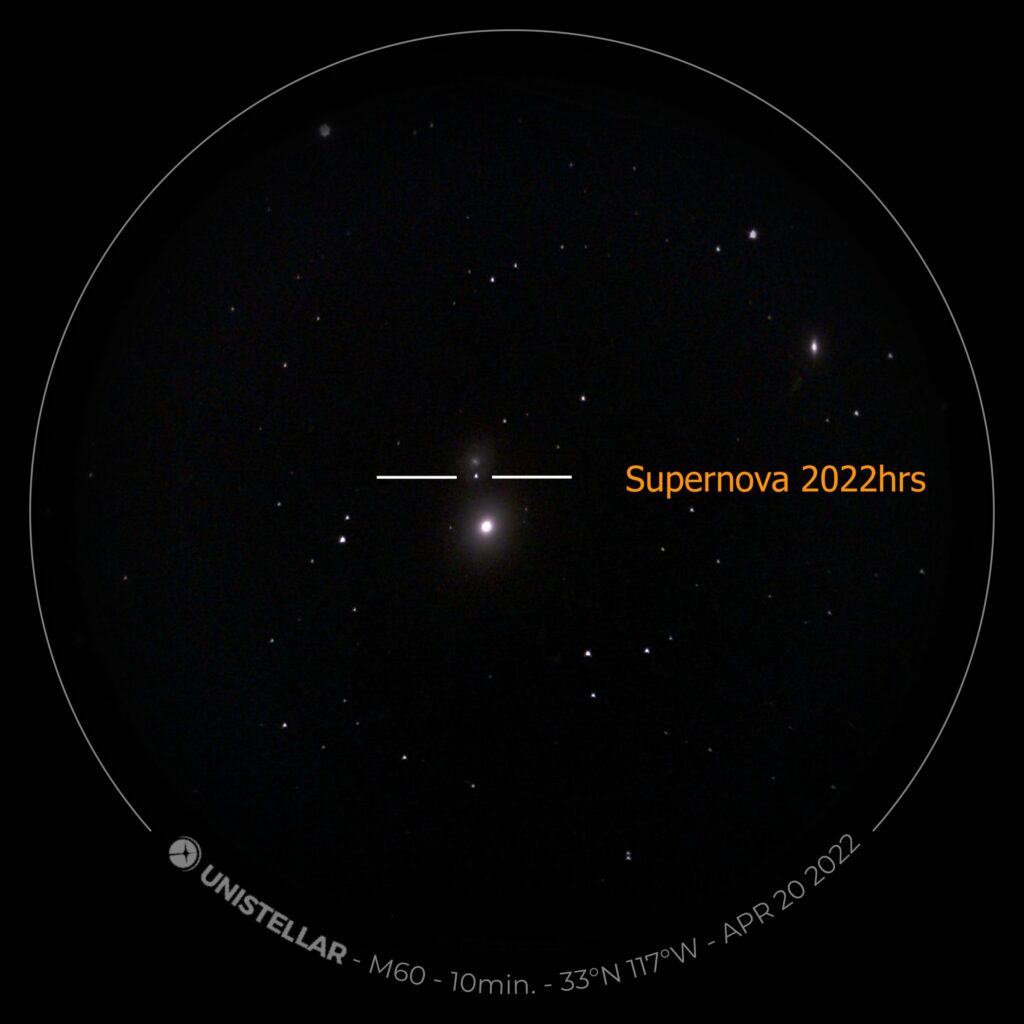
This week in what’s up is a supernova you can see in your telescope, SN2022hrs. It was found in the galaxy NGC 4647 last week on April 16, 2022, by Japanese astronomer Koichi Itagaki. NGC 4647 is right next to the galaxy Messier 60, and both are in the constellation Virgo. NGC 4647 is magnitude 11, while M60 is a much brighter magnitude 9.8. Hundreds are discovered each year, and 2022 is no different even though we’re only five-ish months into the year.
Finding supernova SN2022hrs is simple, as it is magnitude 12.5, meaning yes, it is bright than its host galaxy. First, find Virgo and look for the arm of two stars splitting off from the middle. The further of these two stars away from the line is Epsilon Virginis, and to the north of Epsilon Virginis is M60/NGC 4647, where the supernova is located. We’ll have links to a finder chart in our show notes as well.
Also of note, this week in What’s Up is International Dark Sky Week.
From April 22 to 30, the International Dark-Sky Association celebrates this event. They warn that 83% of the human population lives under light pollution, and this can have significant health effects beyond just not seeing stars in the night sky. It disrupts wildlife, affects human sleep patterns, wastes money, and contributes to climate change.
This has been the Daily Space.
You can find more information on all our stories, including images, at DailySpace.org. As always, we’re here thanks to the donations of people like you. If you like our content, please consider joining our Patreon at Patreon.com/CosmoQuestX.
Credits
Written by Pamela Gay, Beth Johnson, Erik Madaus, and Gordon Dewis
Hosted by Pamela Gay, Beth Johnson, and Erik Madaus
Audio and Video Editing by Ally Pelphrey
Content Editing by Beth Johnson
Intro and Outro music by Kevin MacLeod, https://incompetech.com/music/


 We record most shows live, on Twitch. Follow us today to get alerts when we go live.
We record most shows live, on Twitch. Follow us today to get alerts when we go live.